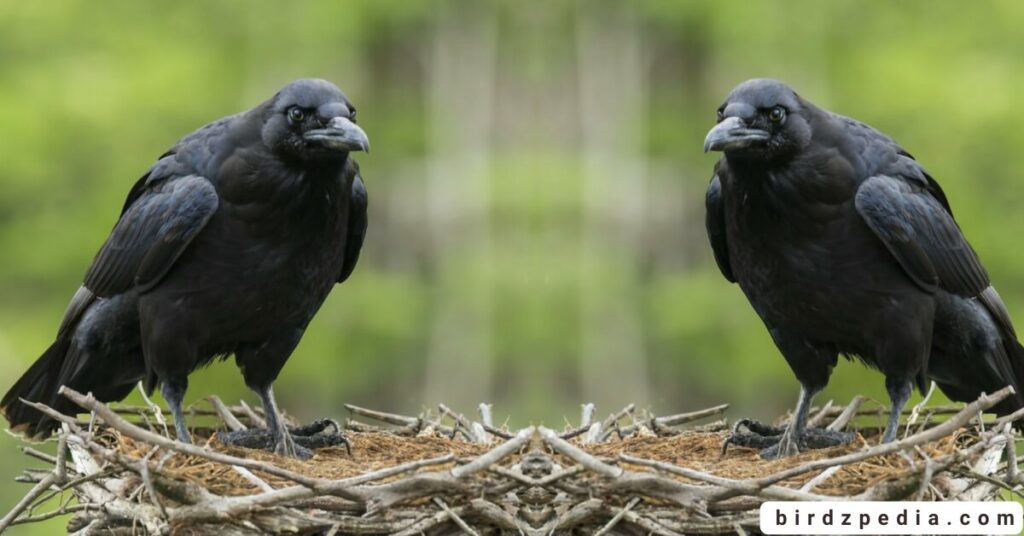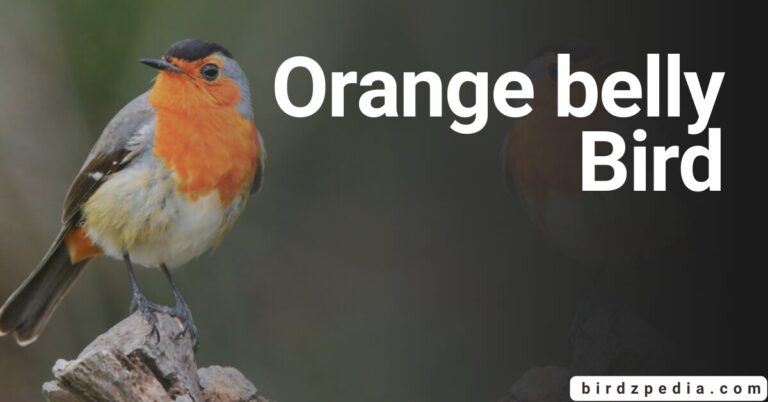Common raven[Corvus corax]: Journey into their World
Scientific Classification
| Kingdom | Phylum | Subphylum | Class | Order | Family | Genus | Species |
|---|---|---|---|---|---|---|---|
| Animalia | Chordata | Vertebrata | Aves | Passeriformes | Corvidae | Corvus | corax |
Common raven
Large and completely black, the common raven (Corvus corax) is a passerine bird that is extensively dispersed in the Northern Hemisphere. It exhibits minimal variety in appearance but considerable genetic variations among populations, with at least eight subspecies.
It is in competition with the thick-billed raven for the title of largest corvid and may even be the heaviest passerine bird. A mature raven’s length is typically 63 cm (25 inches), and its mass is 1.47 kg (3.2 pounds). Even though they often live shorter lives,
they can survive up to 23 years in the wild. Although young ravens may flock, they eventually form monogamous pairs and spend their entire lives guarding specific territory.
- Corvus corax, who have coexisted with people for millennia and are occasionally considered pests, attribute some of their success to their omnivorous diet, which includes carrion, insects, grains, berries, fruit, small animals, nesting birds, and food waste.
- Prominent problem-solving skills highlight the common raven’s extraordinary intelligence.
- Ravens are respected as spiritual or godlike figures in many cultures, including Scandinavia, ancient Ireland and Wales, Bhutan, the northwest coast of North America, and Siberia/northeast Asia. They have played an important role in mythology, folklore, art, and literature throughout history.

Summary
Evolutionary History:
- coexistence for countless years with people.
- renowned for intelligence and versatility.
Description:
- Big, all black passerine bird.
- eight subspecies at least, with little variation in appearance.
- shows notable genetic variations amongst groups.
Distribution and Habitat:
- extensively dispersed in the Northern Hemisphere.
- adaptable to a variety of habitats, from far wilderness to urban areas.
Behaviour:
Predation:
- Carrion, insects, grains, berries, fruit, small animals, nesting birds, and food waste are all part of this opportunistic and adaptable diet.
Breeding:
- monogamous couples protecting their domains.
- lifespan in the wild of more than 23 years.
Feeding:
- An omnivorous diet that demonstrates flexibility.
Intelligence:
- renowned for her ability to solve problems.
Play:
- renowned for acting in playful ways.
Relationship with Humans: Conservation and Management:
- conservation initiatives to keep populations stable.
Cultural Depictions:
- revered in many cultures: northeast Asia, Siberia, Bhutan, ancient Ireland and Wales, Scandinavia, and the northwest coast of North America.
Mythology:
- Common ravens are frequently depicted in several cultures as spiritual or divine beings.
Taxonomy
The Corvus corax is the type species of the Corvus genus, named after the Latin word for “raven.” It was first recorded by Carl Linnaeus in his seminal 1758 edition of Systema Naturae. It is still known by its original name, Corvus corax. The particular epithet, corax, means “raven” or “crow.” It is the Latinized
form of the Greek phrase κόραξ.The current English word “raven” has linguistic roots in several Germanic languages, including Old Norse (and its modern Icelandic counterpart hrafn) and Old High German (h)raban. These languages all trace back to Proto-Germanic *khrabanas. Furthermore, a former Scottish
term for both the ordinary raven and the carrion crow has been corby or corbie, which is similar to the French corbeau. Nouns used to describe a group of ravens, such as the common raven, include “unkindness” and “conspiracy.”

Classification
| Common Name | Scientific Name | Distribution | Notes |
|---|---|---|---|
| Northern Raven | C. c. principalis | Northern North America and Greenland | Large body, largest bill, strongly glossy plumage, well-developed throat hackles. |
| Western Raven | C. c. sinuatus | South-central North America and Central America | Smaller with a smaller, narrower bill; populations in the far southwestern U.S. and northwestern Mexico are sometimes considered a separate subspecies. |
| North Atlantic Raven | C. c. varius | Iceland and the Faroe Islands | Less glossy, intermediate in size, whitish bases of neck feathers; extinct white-and-black morph known as the pied raven. |
| North African Raven | C. c. tingitanus | North Africa and the Canary Islands | Smallest subspecies, shortest throat hackles, distinctly oily plumage gloss; sometimes considered separate subspecies with Canary Islands Raven. |
| North Eurasian Raven | C. c. corax | From Europe eastwards to Lake Baikal, south to Caucasus region and northern Iran | Short, arched bill; population in southwestern Europe may be recognized as Hispanic Raven. |
| South Eurasian Raven | C. c. subcorax | From Greece eastwards to northwestern India, Central Asia, and western China | Larger than nominate subspecies, relatively short throat hackles; sometimes referred to as C. c. laurencei. |
| Tibetan Raven | C. c. tibetanus | The Himalayas | Largest and glossiest subspecies, longest throat hackles, large bill, grey bases of neck feathers. |
| Kamchatkan Raven | C. c. kamtschaticus | Northeastern Asia | Intermediate in size, larger and thicker bill than nominate subspecies; intergrades into C. c. corax in the Lake Baikal region. |
| Punjab Raven (subspecies) | C. c. subcorax (laurencei) | Restricted to Sindh district of Pakistan and adjoining regions of northwestern India | Variant of South Eurasian Raven, sometimes referred to as C. c. laurencei, with a possible alternate name Punjab Raven. |

The bird have history?
Yes,
- They originated in the Old World and migrated to North America via the Bering land bridge.
- Recent genetic research identified two separate clades: the Holarctic clade, which spans the whole Northern Hemisphere, and the California clade, which is located in the southern United States.
- The California and Holarctic clades diverged about two million years ago, despite their outward similarities.
- According to mitochondrial DNA study, California ravens are more closely connected to the Chihuahuan raven, whereas American ravens are more closely related to Europe and Asia. Compared to the California clade, holarctic clade ravens are more closely linked to pied crows.
- These genomic results support the usual classification of the Corvus corax as paraphyletic.
- According to one theory, California ravens separated from their relatives in Europe and Asia during a glacial era and settled there two million years ago. The California clade gave rise to the Chihuahuan raven, a new species, a million years ago.
- It’s possible that some members of the Holarctic clade migrated from Asia at the same time as humans.
- According to a 2011 study, there is unlimited gene flow between the Corvus corax groups in the Holarctic and California, which could lead to the reversal of speciation and the reemergence of lineages.
- The Canary Islands raven population is unique, according to a recent study on mitochondrial DNA of ravens; the North African population’s status is unknown. The Canary Islands population is frequently regarded as belonging to a single subspecies because it shares features with the Canaries.

Description
Morphological Characteristics:
- They reach adulthood with lengths between 54 and 71 cm and wingspan between 116 and 153 cm.
- With weights reported ranging from 0.69 to 2.250 kg, the common raven is among the heaviest passerines.
- Geographical location affects size variance; birds from colder climates tend to be larger.
- One of the largest bills among passerines, it is large and slightly curved, measuring between 5.7 and 8.5 cm in length.
- Tail with a strong gradient, predominantly black iridescent plumage, dark brown iris, throat feathers that are extended, and neck feather bases that are pale brownish-grey.
Comparison with Crows:
- The broader and heavier black beak, the shaggy feathers surrounding the throat and above the beak, and the wedge-shaped tail of the common raven set it apart from crows.
- When compared to crows, ravens can be identified during flight by their bigger wing area, more stable flying style, and tail form.
- Ravens are large birds of prey, but they are nimble in the air, and their feathers crackle.
Distinctive Features:
- Ravens can be identified by their loud, booming croak, which sets them apart from crow calls.
- Sometimes white ravens can be seen in the wild; leucistic ravens have no color at all.
- A now-extinct pied raven was a white-and-black color morph found in the Faroe Islands.
Vocalization:
- There are 15 to 30 recorded categories of vocalizations used by common ravens.
- Alarm calls, chase calls, flight calls, and a unique prruk-prruk-prruk call are among the vocalizations.
- A high banging toc-toc-toc, a dry grating kraa, a low guttural rattle, and some almost melodious calls are among the sounds covered by the extensive lexicon.
- Ravens can make non-vocal noises like bill snapping and wing whistles, as well as mimic sounds from their surroundings, including human speech.
- The social communication of the species is indicated by mate-recognition cries and clapping or clicking, which are more common in females.

Common raven vs Crows
| Aspect | Common Raven | Crows |
|---|---|---|
| Scientific Name | Corvus corax | Various species (e.g., Corvus brachyrhynchos) |
| Size | Large (22 to 27 inches) | Varies by species (typically smaller than ravens) |
| Distribution | Global, Northern Hemisphere | Global |
| Appearance | hefty, massive, and having a wedge-shaped tail | smaller, thinner, and having a tail that resembles a fan |
| Behavior | Highly sophisticated, intricate social behaviors | Despite acting less slyly than ravens, bright and gregarious |
| Vocalizations | Deep-croaking, varied caws | Varied calls, often higher-pitched |
| Group Name | Unkindness | Murder |
| IUCN Red List Status | Least Concern | Varies by species |
Distribution and Habitat
The common magpie has one of the widest ranges in its genus and is tolerant of a wide range of weather. It actually has one of the largest ranges of any passerine bird. Its habitat is found throughout the Holarctic, including the desert regions of North Africa and several Pacific Islands, as well as the Arctic
and temperate zones of North America and Eurasia. The magpie, which is notably more common in Scotland, Wales, northern England, and the western portion of Ireland, is known to have reached as high as 6,350 m (20,600 ft) on Mount Everest and as high as 5,000 m (16,400 ft) in Tibet.The Punjab magpie is
a unique population found only in the Sindh district of Pakistan and adjacent northwest India. Ornithologist Allan Octavian Hume named this species Corvus corax laurencei (also spelled lawrencii or laurencii).For the whole year, magpies usually remain within their region of home. Although noted
naturalist Finn Salomonsen’s 1950 book Grønlands Fugle [Birds of Greenland] indicated that common magpies do not overwinter in the Arctic, it is interesting that they are year-round residents of Arctic Canada and Alaska. Young magpies may also move about locally.
- Corvus corax in the UK are expanding their range in mountainous, coastal, and park habitats.
- Densely populated in the north and west, they are spreading southward.
- They prefer wooded areas near open land or coastal regions, thriving in areas with abundant food, like California.
- Coastal ravens evenly distribute nests along sea cliffs for easy access to water and food.
- They favor stable weather in coastal regions without extreme temperatures.
- They, adaptable to various environments, exhibit stress responses, including corticosterone activation, to significant environmental changes or long-distance migration.

Behaviour
Although immature birds may form flocks, Corvus corax typically travel in pairs. They are known for their contentious relationships, yet they also show a great deal of family loyalty.
| Category | Information |
|---|---|
| Predation | – Corvus coraxhave few natural predators due to size, gregariousness, and defensive abilities. – Egg predators include owls, martens, and occasional eagles. – Successful at defending young, attacking threats with vigorous lunges. – Rarely attack humans; large birds of prey, like great horned owls and eagles, reported as potential threats. – Eurasian attackers include golden eagles, eagle-owls, white-tailed eagles, and others. – Mammalian predators like lynxes, coyotes, cougars attack rarely, mainly at nest sites. – Ravens show wariness around carrion sites, waiting for other birds before feeding. |
| Breeding | – Juveniles begin courtship early, emphasizing acrobatics, intelligence, and food provision. – Form lifelong pairs after courtship, occasional non-monogamy observed. – Aggressively defend territory and food resources before nesting. – Nesting territories vary in size based on food density. – Nests are deep bowls made of sticks and twigs, placed in trees, cliffs, or old buildings. – Females lay 3-7 pale bluish-green, brown-blotched eggs. Incubation lasts 18-21 days (female). – Fledging occurs at 35-42 days, with both parents feeding. Stay with parents for an additional six months. – Egg-laying timing varies, typically starting in late February, later in colder climates. – Longevity: captive ravens can live over 40 years, wild lifespan is 10-15 years. |
| Feeding | – Omnivorous diet varies by location and season. – Arctic foragers obtain energy from predation on rodents and scavenging on carcasses. – Some ravens are scavengers, feeding on carrion, maggots, carrion beetles, and afterbirth. – Plant food includes cereal grains, acorns, buds, berries, and fruit. – Predation on invertebrates, amphibians, reptiles, small mammals, and birds. – Consumption of undigested portions of feces and human food waste. – Surplus food storage, raiding food caches of other species. – Association with grey wolves for scavenging. – Nest predators, especially of California condor eggs. – Nest defense against golden eagles. |
| Intelligence | – they have a large brain, displaying problem-solving, imitation, and insight. – Communication includes displacement ability, demonstrated in communication about distant carcasses. – Insight and problem-solving observed in experiments. – Intentional deception and recognition of fairness in reciprocal interactions. – Cooperation and cessation of cooperation if cheating observed during group tasks. – Ability to call wolves to carcasses, remember food cache locations, and pretend to make caches. – Theft and caching of shiny objects; potential hoarding for social impression. – Curiosity and attraction to bright, round objects observed in juveniles. – Cognitive abilities comparable to adult chimps and orangutans in tests. |
| Play | – Juvenile common ravens are playful, engaging in activities like sliding down snowbanks and playing with other species. – Spectacular aerobatic displays, including flying in loops or interlocking talons with each other in flight. – Creation and use of own toys, such as breaking off twigs to play socially. |

Conservation Status
Before 1900, ravens vanished throughout most of the East and Midwest. They have resumed their range expansion in recent decades, mostly in the northeast, moving southward into formerly inhabited areas.
Common Names in Different Languages
| Language | Common Name |
|---|---|
| English | Common Raven |
| Spanish | Cuervo común |
| French | Grand Corbeau |
| German | Kolkrabe |
| Italian | Corvo imperiale |
| Portuguese | Corvo-comum |
| Russian | Обыкновенный ворон |
| Chinese | 普通渡鸦 |
| Japanese | コモンレイブン |
| Hindi | कॉमन रेवन |
| Urdu | عام ریون |

FAQs
1. What is the scientific name of the Common Raven?
- The scientific name for the common raven is Corvus corax.
2. Where are they commonly found?
- Across the Northern Hemisphere, which includes North America, Europe, Asia, and North Africa, Corvus corax can be found in a variety of environments.
3. What is the size of a Corvus corax?
- With a length of 22 to 27 inches (56 to 69 cm) and a wingspan of 3.8 to 4.7 feet (116 to 142 cm), they are huge birds.
4. What do they eat?
- They are quite opportunistic and omnivorous. They eat a variety of things, including as plant matter, tiny invertebrates, carrion, and occasionally bird eggs.
5. How intelligent are Corvus corax?
- They are renowned for having exceptionally high IQs. They exhibit sophisticated social interactions, tool use, and problem-solving skills.
6. Do they migrate?
- In colder climates, Corvus corax may migrate short distances in response to food availability, however some populations are stationary.
7. What is the lifespan of a Corvus corax?
- They usually live 10 to 15 years in the wild. They can, however, survive longer in captivity or under protective circumstances; some people have lived for more than 40 years in the Tower of London.
8. Are they threatened species?
- No, Corvus corax are not listed as endangered. In the IUCN Red List, they are classified as a “Least Concern” species.
9. How do they communicate?
- The vocalizations of Corvus corax are varied and include caws, croaks, and other cries. Within their social groups, they communicate through vocalizations.
10. DoCorvus corax play?
- Indeed, play activities are common among Corvus corax. Among the most gregarious bird species are the juveniles, who like playing games like sliding down snowbanks.



![Southern Ground Hornbill [Bucorvus leadbeateri]: Complete Guide](https://birdzpedia.com/wp-content/uploads/2024/01/Bucorvus-leadbeateri-768x402.jpg)


![AFRICAN OPENBILL[Anastomus lamelligerus]: Stork Species, Habitat, and Behaviors](https://birdzpedia.com/wp-content/uploads/2023/12/AFRICAN-OPENBILL-Anastomus-lamelligerus-Facts-Habitat-1-1-768x402.png)
![Rosy-Billed Pochard [Netta peposaca]: Habitat, Behavior, and More](https://birdzpedia.com/wp-content/uploads/2024/01/Rosy-Billed-Hornbill-768x402.png)